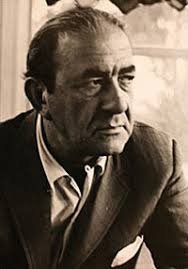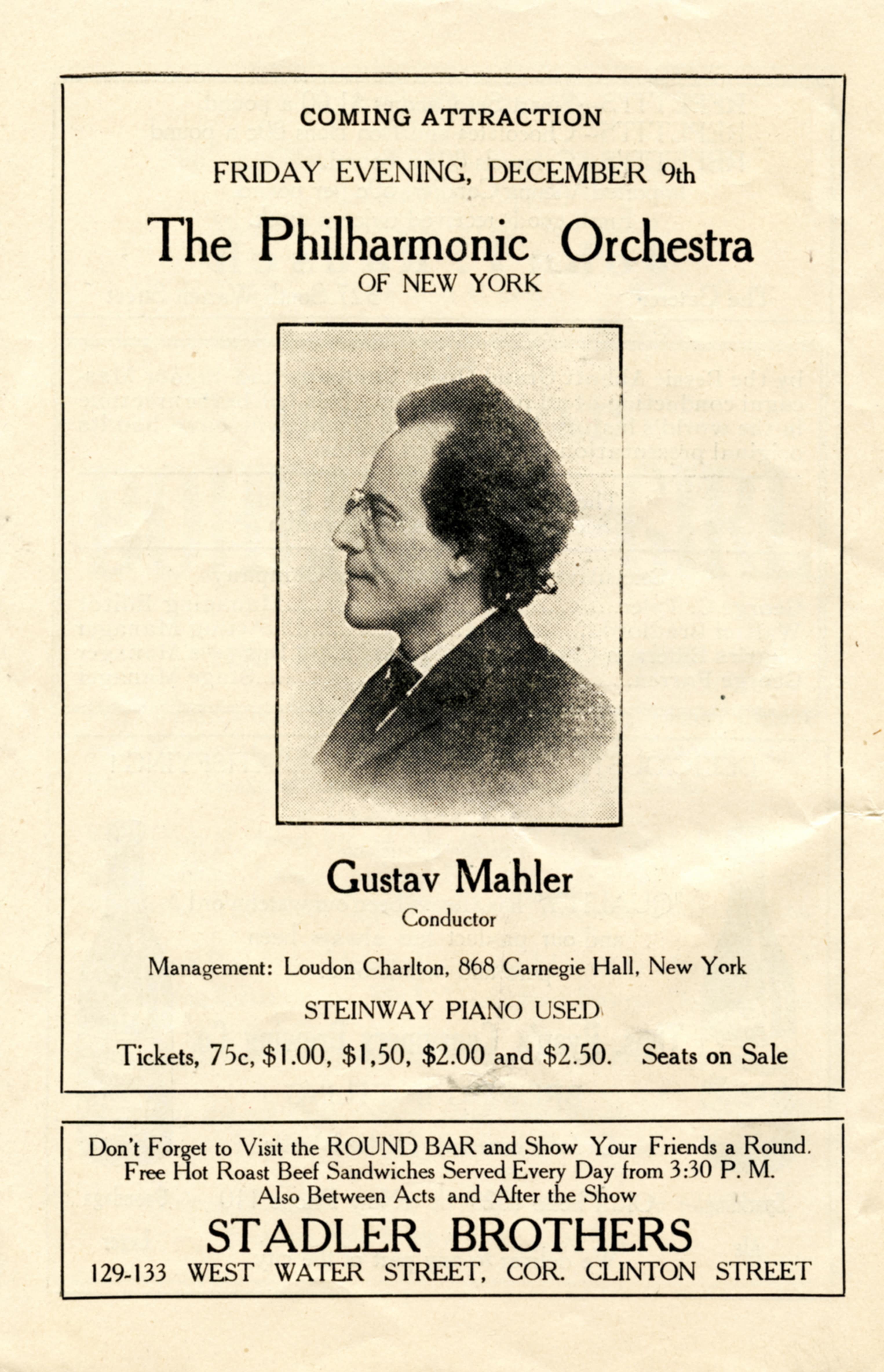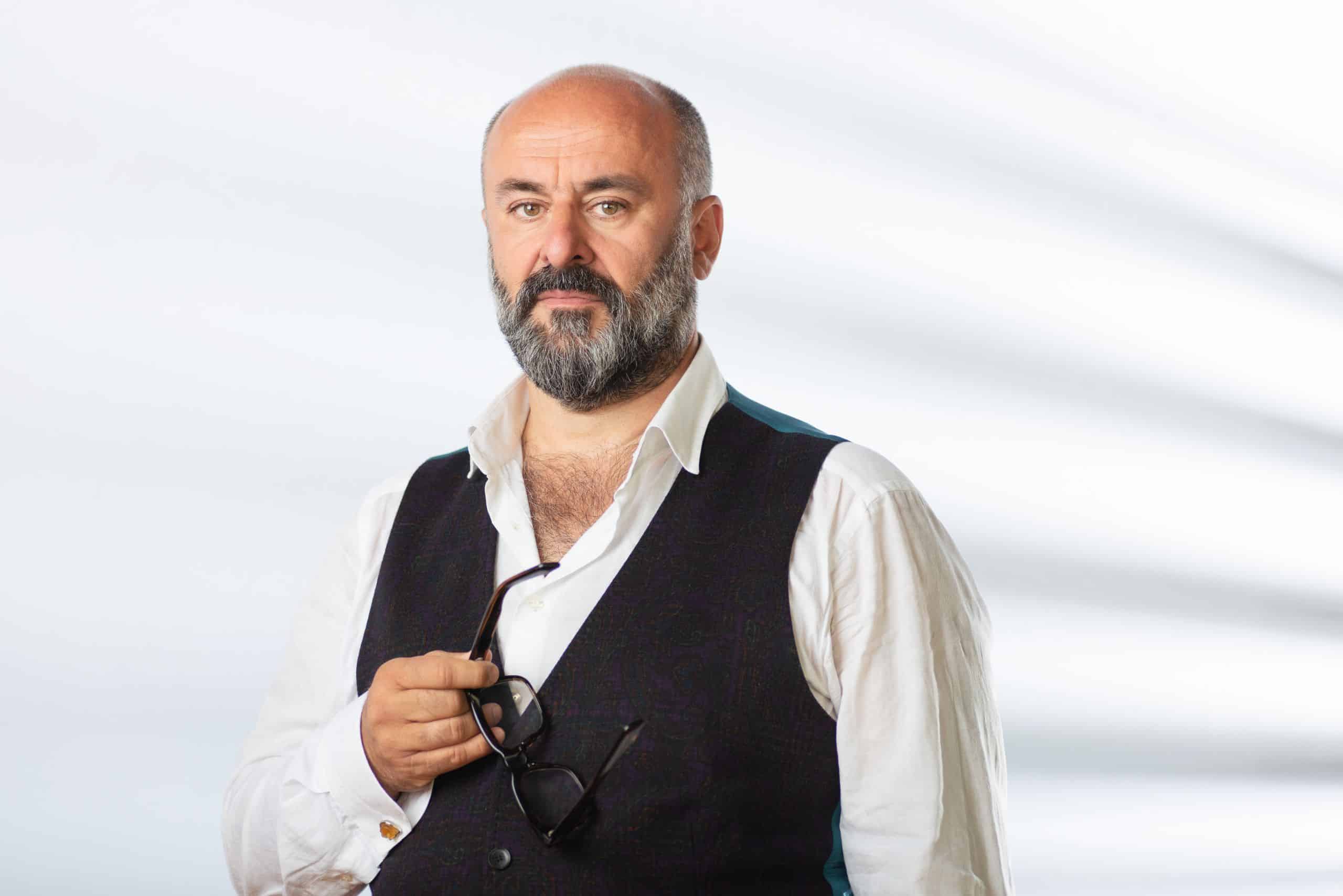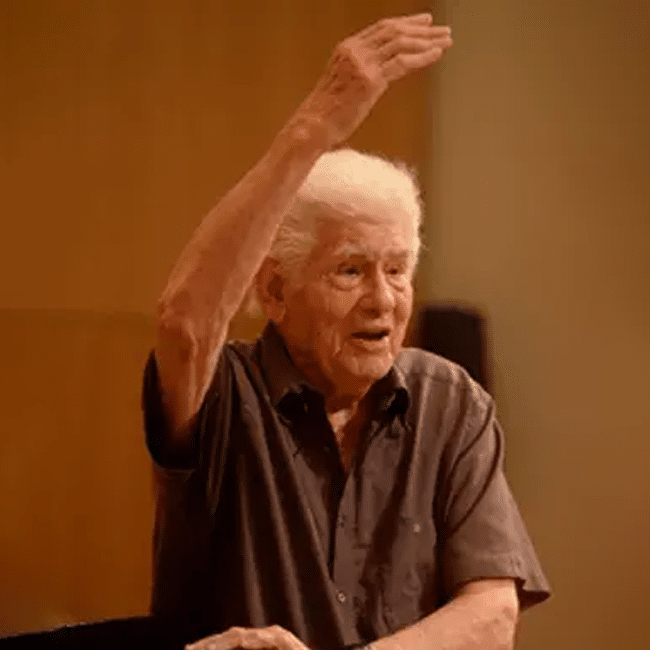I learned my music at Patelson’s
mainThe LA-based composer Michael Robinson remembers a fallen New York institution:
…. Will never forget how one day a frightening, unhinged, and loudly aggressive man entered the store, and we were all taken aback, not sure what to do. Before anyone could phone the police, Joseph came down the staircase to see what the commotion was, and without any visible hesitation metamorphosed from a aristocratic, restrained, and meticulously mannered shop owner into someone like Muhammad Ali, storming towards the much younger intruder with arms waving in a menacing manner while shouting for him to get out, leaving all of us with mouths open in astonishment at his instantaneous transformation. Mr. Patelson had scared the Alfred Garrievich Schnittke out of the fellow who turned and hurried out…
Read on here.

Joseph Patelson





Patelson’s was central to every musician and music student during its day. While it was hardly the only music store – I can recall at least 3 or 4 others serious ones, including to big ones, Schirmers and Carl Fisher, it was Patelson’s that professional musicians seem to go. And, it was where music students would often meet up on Saturdays before going off to other adventures. While they didn’t have “everything,” they often seemed to. Patelson’s was also a mandatory stop for members of visiting orchestras performing at Carnegie Hall, across the street, and it wouldn’t be surprising to see someone famous in your world in the store.
It was a curiously intimate place. The small building itself was very narrow, squeezed in between two much larger structures, and the second floor, which contained Joseph Patelson’s “office” (just a desk) was in the middle of the organ music and large conductor’s scores section that one could freely browse. He never seemed to mind. The staff was not only knowledgeable, they also seemed to have stayed there for their entire lifetimes. As a student I must have spent nearly all my extra money in the place, amassing a small library of my own. My first purchase as a 16-year-old visitor to New York was Ives’ “Concord” Sonata. After that I bought just about everything. But, after so many years, the need to go there wasn’t as great, so I visited less and less. Then I moved away from New York for about 12 years or so. Years after my return, I went there to get a critical edition of Rhapsody in Blue that I had just heard about and went to order it – at the order desk, right behind the stairs. I began to ask the lady for what I needed and after I had finished my request, she just looked up at me, smiled, and said “I remember you when you were just a teenager and used to come in here all the time.” It had never occured to me that any of us who considered it our “corner store” were at all memorable to the very busy staff.
My last visit took place after the New York Times ran a story about the shop closing and were having a going out of business sale. To be honest, I had had already purchased just about everything I ever wanted, but I couldn’t leave the place without one last score. And, there it was: a Kalmus pirated edition – conductor’s score – of the 1928 version of Rachmaninoff’s Fourth Piano Concerto, which had long been superseded by the very different and final 1941 version, the one everyone played. There was the familiar green cover and most of us usually avoided them because of the frequently corrupt texts they hawked, but this I had to have. I really didn’t “need” it, but I was curious to see how different it was from the final version. And, I thought it was a fitting way to say good-bye to Patelson’s and cap off a lifetime of purchasing scores I might not need, but wanted to know.
A lovely tribute. Could not have said it better.
I still keep the iconic envelopes in which the music you bought was inserted, with the string clasp and the classy logo. It was a unique institution, and New York is measurably diminished by its loss.
My part-time job at Patelson’s (my first day gig after graduation from Yale Graduate School of Music) was also my avenue to meeting and greeting the music world’s greats. I remember personally serving André Watts, Ned Rorem, Beverly Sills, and Art Garfunkel (who was interested in Handel’s harpsichord music), among many others. Robinson’s memoir is full of juicy info — as are all other memoirs, whether written or merely remembered, of those who worked at Patelson’s. And yes, Phil Mealey was definitely a shining light there!
I worked at Patelson’s briefly in the ’70s and I knew Phil Mealey…sorry to hear of his passing.
Those were the days! I do not ever remember making a trip to NYC and not stopping at Patelson. And one never knew who you would run into. One time we were there and Lee Strasbourg was there. Those were the days when music stores also carried an inventory both new and used! Those were the days when music created a community a meeting place, a human environment rather than a virtual one! I am lucky to have experienced those days. Today;s generation will never have that opportunity, and that is sad.
Thank you for your article, especially the “read on here” part. I WOULD LOVE TO SEE A MOVIE MADE ABOUT EARL WILD! I’m so glad he was talked about in the “read on here” continuation. He passed away 10 years ago and is VERY sorely missed.
This is quite a story.
I wish my violin teacher had lived long enough for me to send this to him; he loved Patelson’s. I never had a chance to get there myself. What he loved most was not just finding things that he had given up hope of ever finding, but just browsing and finding stuff he never suspected even existed. That’s where a good brick and mortar store has it all over internet shopping.
I used to work five blocks from Patelson’s back in the early ’90’s. It was always the best place in NYC to find a new score, or books to research my ever growing collection of musical antiquities. When he didn’t have a thematic catalog, or other hard to find book I needed in stock, Mr. Patelson was always obliging to find a copy for me. I literally built my musical library between Patelson’s and the Strand. As some of you know, I spent the bulk of my pre-pandemic years writing appraisals for composers for a variety of reasons. During the Summer of 2019, I was cataloging an estate for an appraisal when I opened some cartons to find that all the scores and manuscripts were held in those boxes that Patelson’s used to hold their scores. When I asked, I was told Mr. Patelson at the clients request had them custom made for him. You can’t find a music store anywhere (where they still exist) with that level of service.
And Patelson’s was right across the street from the old Carnegie Tavern, the favorite watering hole of NYC’s classical musicians, yours truly included.
Drinking places for NYC musicians used to be “segregated:” Carnegie Tavern for the classical guys, Hurley’s Salon (Rockefeller Center) for the recording studio guys, China Song Restaurant (8th Avenue) for the Broadway guys. Those were the days!
You left out Jim & Andy’s on 6th Av and 48th St. – a hangout for jazz and studio musicians. A & R recording studios were above it on the 2nd floor.
My father worked at China Song Restaurant during the 70s… trying to find some historical information on the restaurant… what time frame are you referring to? I’ve also read that it was a popular place that Bobby Darrin used to visit…
Thank you for calling our attention to this wonderful essay! It recalls not only Patelson’s, a landmark of my youth that is very much missed, but beloved people and a time in the city that exist now only in memory. Good to have them back for a bit!
And to go a bit further back, does anyone remember Mrs. Binzer on the Upper East Side? Was it 84th between 2nd and 3rd?
I’ve yet to figure out the best way to replicate their sheet music shelving and organizing setup. Who grabbed all the hardboard dividers?
A touching memoir to which so many of us can relate, with the dates and personae changed. Genuinely a wonderful educational institution over so many decades! Even the finest Internet shops don’t quite compare…
The lure of the remaindered texts, the aroma of musty, pre-owned scores, combined with the knowledgeable, underpaid staff, led me to apply for a job there in 1978.
During my employ there, I purchased, at a 40% discount, every score I thought I would ever need or want (so naïve). Mr. Patelson paid me $87 per week in cash (for six days/week, full time, and which he never declared to the IRS so he could avoid paying the payroll tax).
The biggest perks of my time there included regularly being offered free tickets to the Concertgebouw or I Musici (or whoever was performing across the street that night and came in after a dress rehearsal to browse), as well as meeting many musicians with whom I was subsequently invited to work with: Nathan Milstein, Leonard Bernstein, Elmer Bernstein, William Steinberg—I never left a Stein unturned.
There was another store, Musicmasters? On the street with the Brazilian restaurants, up on the 7th floor or something. You couldn’t browse though, everything was behind the counter, which made for some uncomfortable shopping. They seemed to serve the theatrical crowd, mostly. And Frank Music was for chamber music. I had to go to International Music Service on 69th Street for my needs, or perhaps Carl Fischer’s, which was huge and wonderful.
In the 90s I lived at the Adlon on 54th & 7th. It was such a pleasure to paw through the piles of remaindered books at the front of Patelson’s. How many happy serendipitous discoveries did I make that could have never happened online. A marvelous store from a gone New York. Hail to everyone who worked there who might read this.
The problem with musicians is their passivity. Another store could have taken the place of Patelson’s. A classical music store, or one with everything, does not have to be on the street. With such a vast number of musicians in the city, there’d be plenty of business. But everyone wants it done for them. That’s why we have no infrastructure for classical music. That’s why it’s so vulnerable. And that’s what kills the art of it. Only the business survives, where it can.
If the rents in major cities were not so hideous, and the sector more lucrative (I suspect that most classical-music shops make the big money on teaching material for beginners and/or very rare antiquarian books, and make relatively little from the massive stock of paperback scores and/or second-hand out-of-print publications that is essential to being taken seriously by musicians), I might just agree with Grittenhouse.
It takes an unusual combination of musical expertise, business acumen, and lack of greed to run a music shop successfully. Many of the people who work in music shops would rather be making music, and only a few have the patience and inclination to stay in the business (and climb that particular career ladder) for very long. There used to be an excellent little music shop on Green Street, Cambridge run by Brian Jordan ( https://www.youtube.com/watch?v=KU0YJVCeGj0 ). When, in December 2010, he died, his widow continued to manage the shop for about three years, but closed it after admitting that she could not find anyone “fanatical enough” to take-over the business. But the closing-down sale was something to behold — everything half price.
There were other good music shops in NYC (Frank Music, for example). But nowhere else could you find Patelson’s character — or characters. One time I was checking out a stack of things at the cash register, among them Robert Simpson’s “The Essence of Bruckner.” The guy behind the counter glanced at it and muttered, offhandedly, “I’ve never seen a scratch-and-sniff book about music before!”
An important difference between Patelson’s and the other music dealers: In the store’s heyday, every piece of new music was discounted 10% off the retail price. Saving a few dollars was a big deal then. And used copies were often discounted 50% off the marked price. I was there on the last day to say goodbye to one of my favorite hangouts.